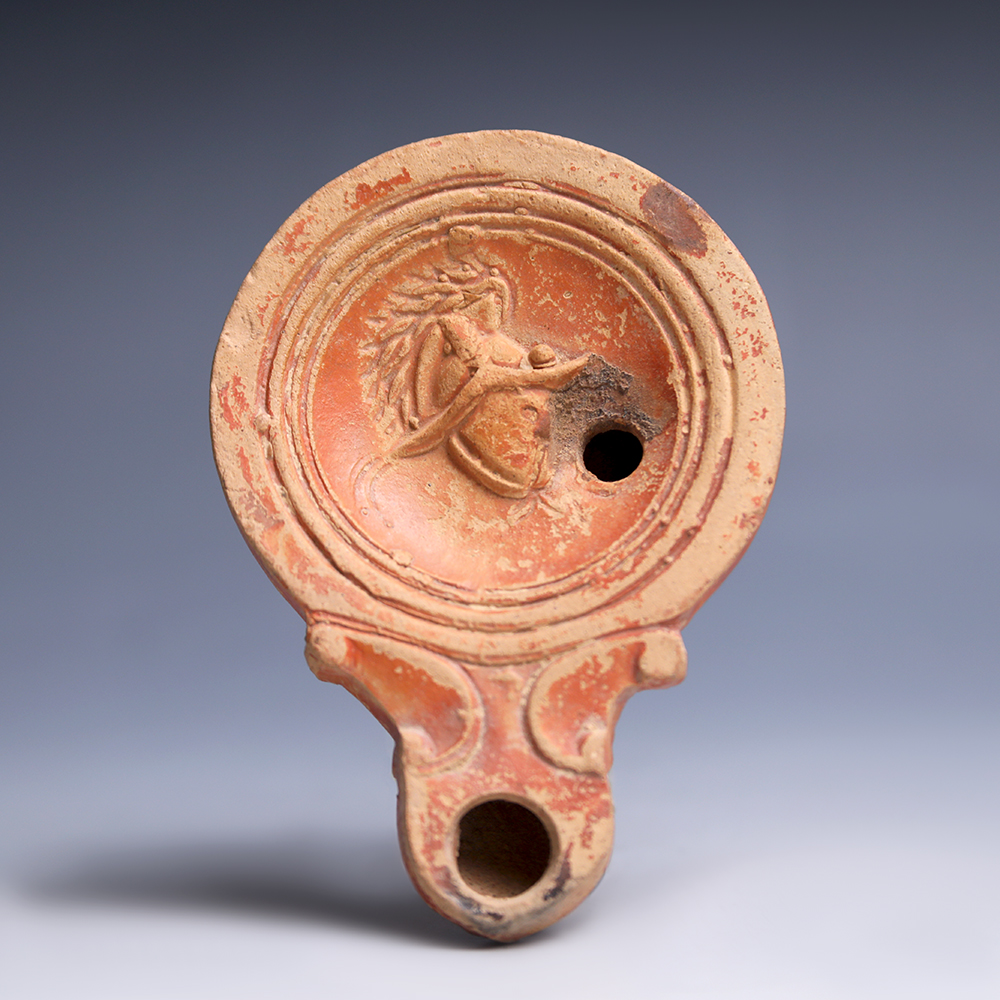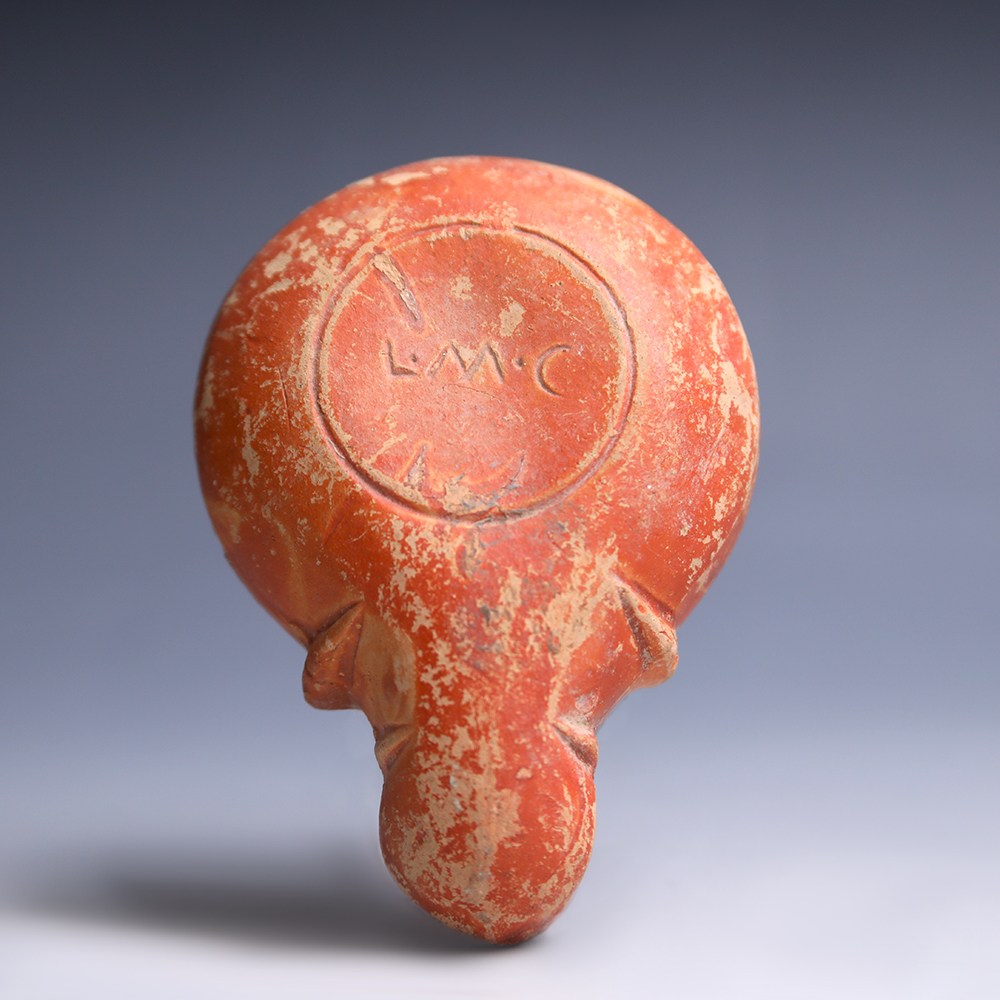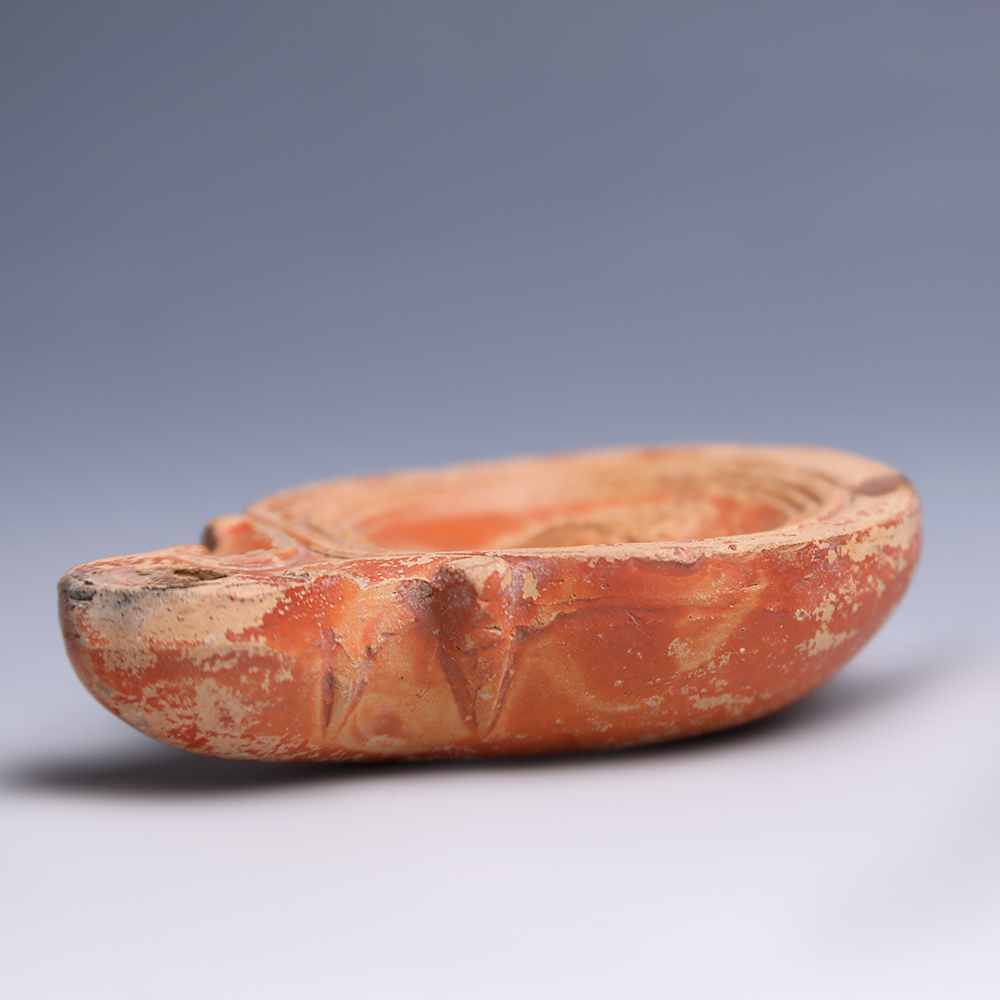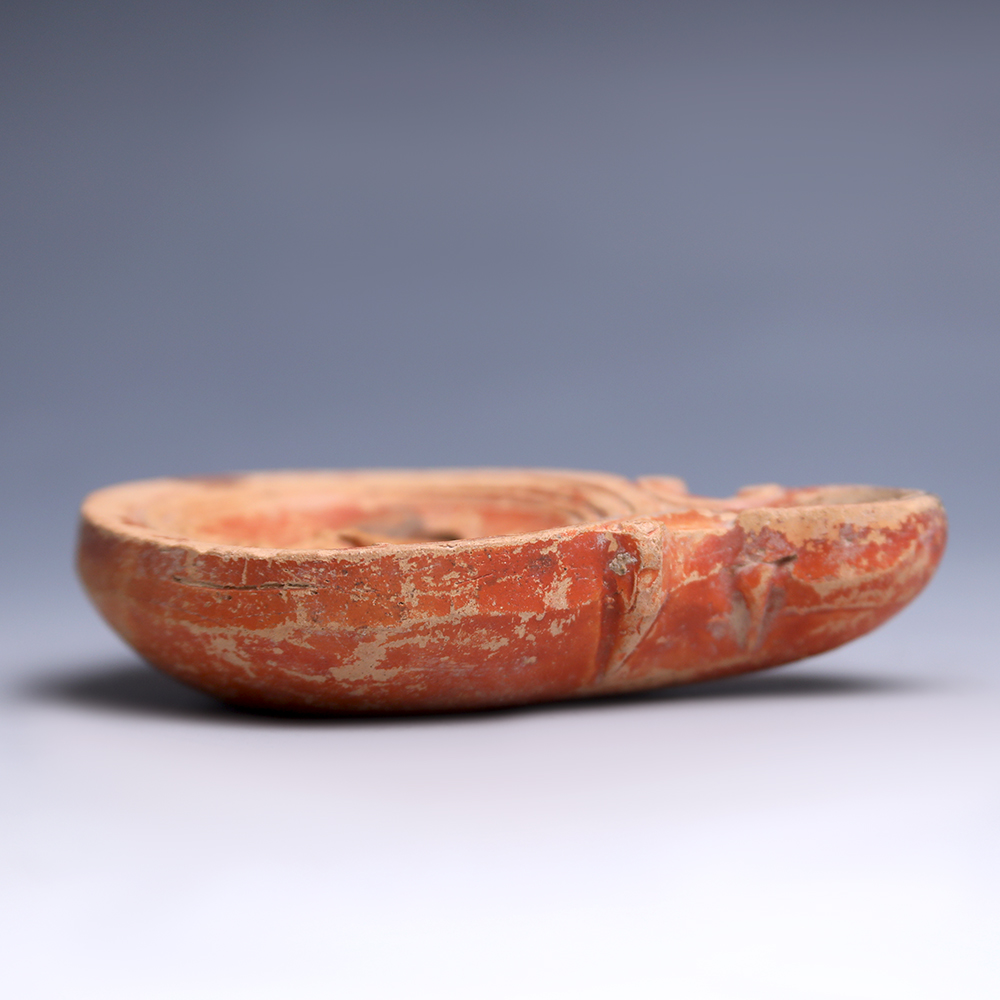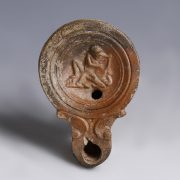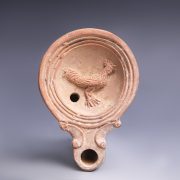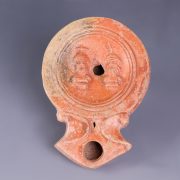The Roman oil lamp, a product almost unparalleled in its distribution throughout the empire, developed towards the end of the Hellenistic period and was to keep its general shape longer than any other item of pottery throughout the Mediterranean. The vast trade networks set up with the expansion of the Roman empire allowed for this item to be spread across Europe, Eastern Asia and Northern Africa. Oil lamps were used by the Romans for mainly three reasons; to light private and public spaces, to give as offerings in temples to the gods and to be placed within a grave or funerary context. As well as linear, geometric and circular designs, favourite subjects for decoration of oil lamps included gods and mythological scenes, scenes from everyday life, gladiatorial depictions, drawings relating to entertainment and theatre, and various animals, fish and birds. Lamps, such as this example, are classified as Loeschcke IV, Bailey B group II, which became standardised during the Tiberian to early Trajianic periods.
To discover more about oil lamps in Antiquity, please visit our relevant blog post: Lighting The Way.
